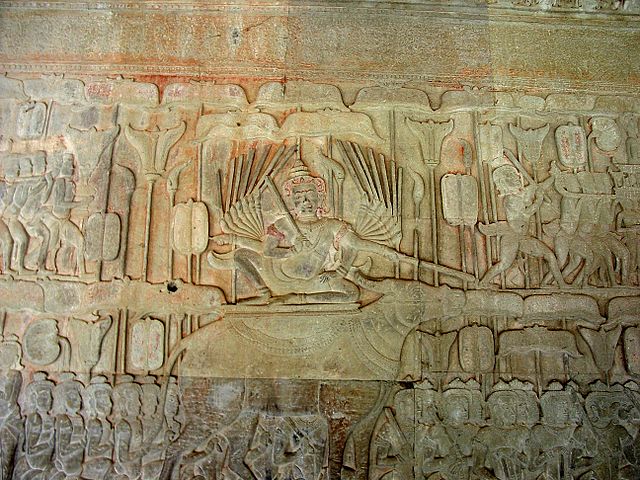
Yama
Heavens and Hells relief
East wing of south gallery
Angkor Wat

|
YamaHeavens and Hells relief
|
Eighteen-armed Yama, the King of the dead, is seated upon his buffalo at the entrance to Hell, where he judges the newly deceased. His multiple arms brandish clubs, and his aspect is frightful to sinners, whom he dispatches to one of thirty-two hells for punishment. The righteous, on the other hand, are sent on to live in heavenly palaces.
As so often in art, the punishments of sinners are more interesting than the rewards of the faithful. Each hell is reserved for a specific sin and punishment. For example, those who despise their parents are thrown into a pit of worms and beaten with clubs. Other sins include such offences as theft, murder, arson, and blasphemy. Sacred gardens and parks must have been important at Angkor: one hell is reserved for those who steal flowers from Shiva's garden, others for those who urinate in parks or cut down protected trees. Disrespecting the Brahmins was also included in the list of damnable offences (not too surprising, since the Brahmins created the list). For at least some offences, the intent was considered as damning as the act. For example, attempted murder was punished the same as actual murder.
Temporal punishments were also severe (Coe, pp.144-145). Criminals were executed by burying alive; others would have their feet, hands, or nose cut off; and thieves could be imprisoned and tortured. A system of fines was used for less serious offences.

|

|

|